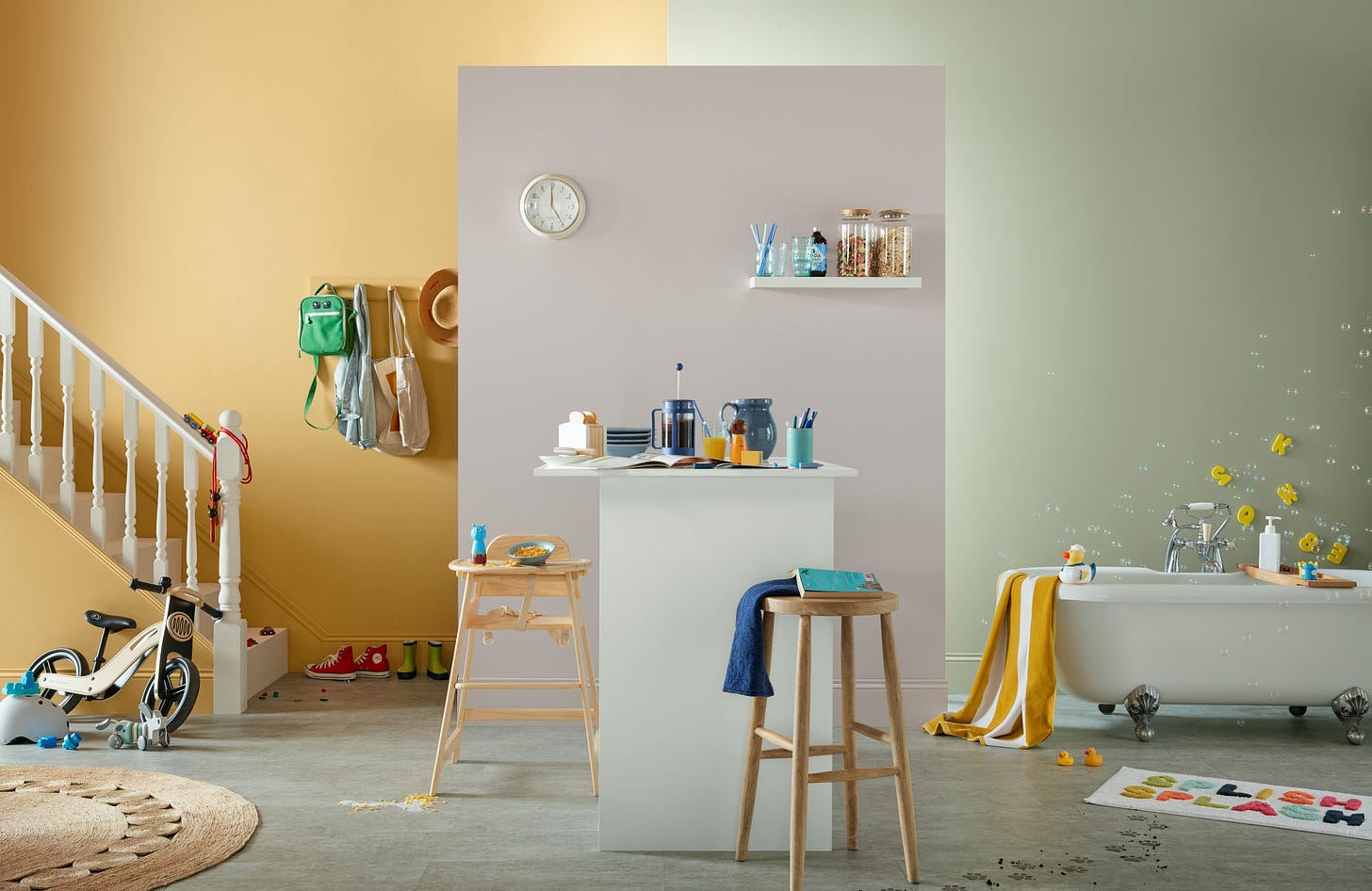How to choose paint colours for your family home
Still on the fence about colour drenching? Haven’t got a scooby which paint finish is the most kid-proof? This newsletter’s for you…
Let’s face it, decorating with kids in tow is hard enough as it is logistically, without having to determine which is the right paint finish or whether you’ve panic-bought the wrong shade in a sleep-deprived state. So we’ve pulled together some handy tips and tricks from some of the top experts in the field to make your next paint project as easy as possible.
Get drenched
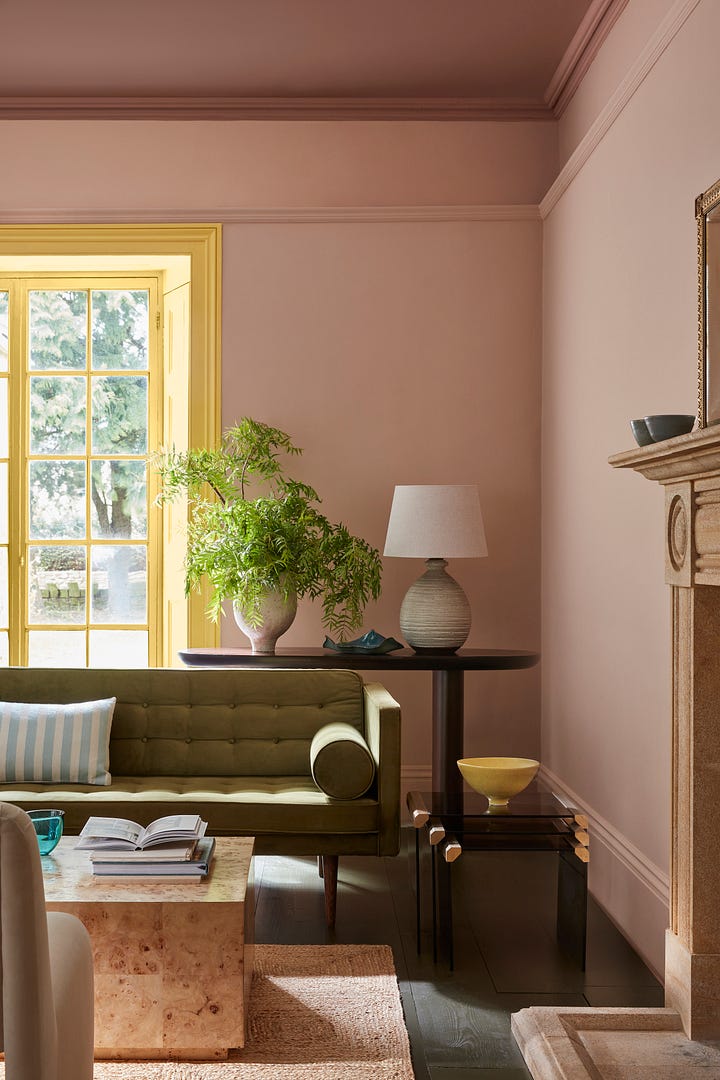
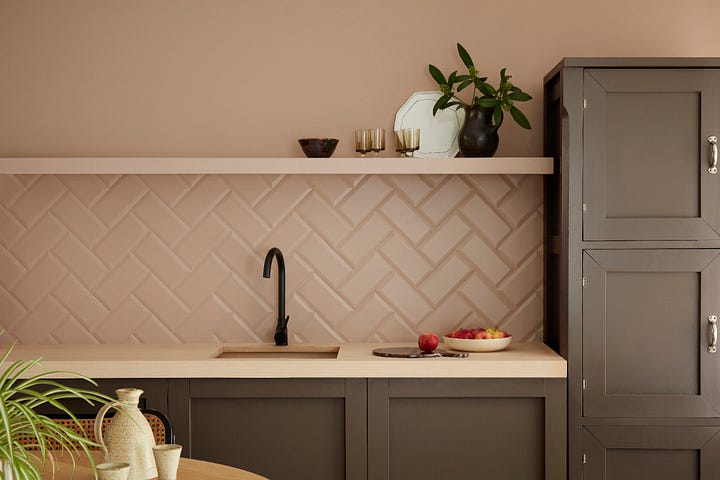
Colour drenching is the paint trend of the moment and essentially involves painting every surface of a room – the walls, skirting boards, ceilings and even furniture and radiators in a single paint colour. Decoratively, it offers a more contemporary vibe and can make a room feel bigger by avoiding the traditional method of cutting the top of the room off visually with a stark white ceiling. Not only that, but in practical terms, colour drenching can also be a more cost-effective and time-efficient way of decorating. This is largely thanks to clever new paint finishes that are hitting the market, such as Little Greene’s new Intelligent Grip and Multi Surface finishes. “We’ve removed the headache of sanding and separate primers, and with a single tin there is less wastage, both in packaging and leftover paint,” explains Ruth Mottershead, creative director at Little Greene. That’s a win-win in our book.
Consider natural light
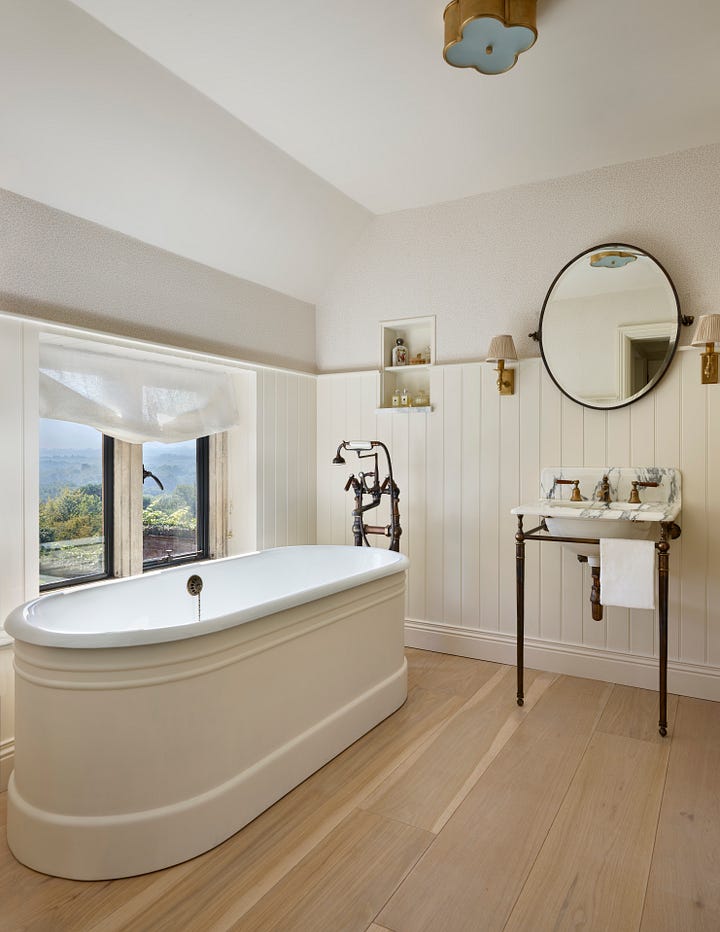
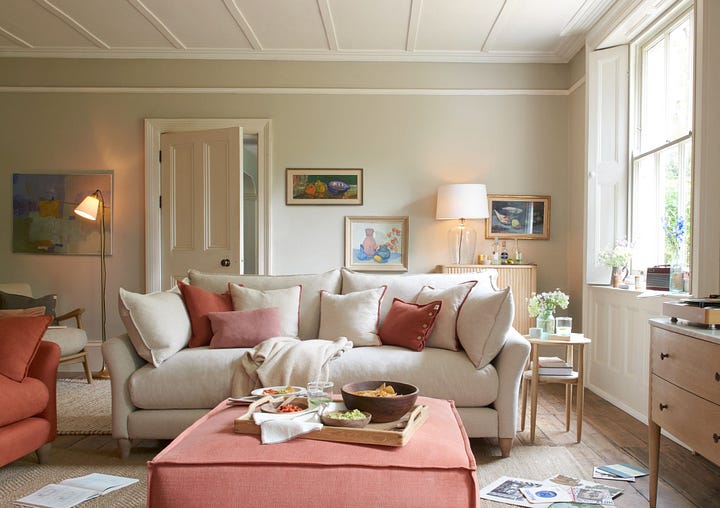
When selecting a paint colour for your north facing or smaller rooms like box bedrooms or the family bathroom, consider colours with warm undertones, which will bring comfort and tranquillity to a space. If you're incorporating white into your scheme, be careful to use a natural mineral white containing no blue to avoid creating a cold atmosphere. You’ve probably heard it before, but don’t forget to paint several sample swatches around the room in your chosen paint shade to see how it looks at different times of the day and consider at what point in the day you’ll be mostly in this room. If you don’t like how the colour looks in the evening and, it’s your living room where you’ll be wanting to relax after putting the kids down, you might want to go back to the drawing board.
Add bold accents
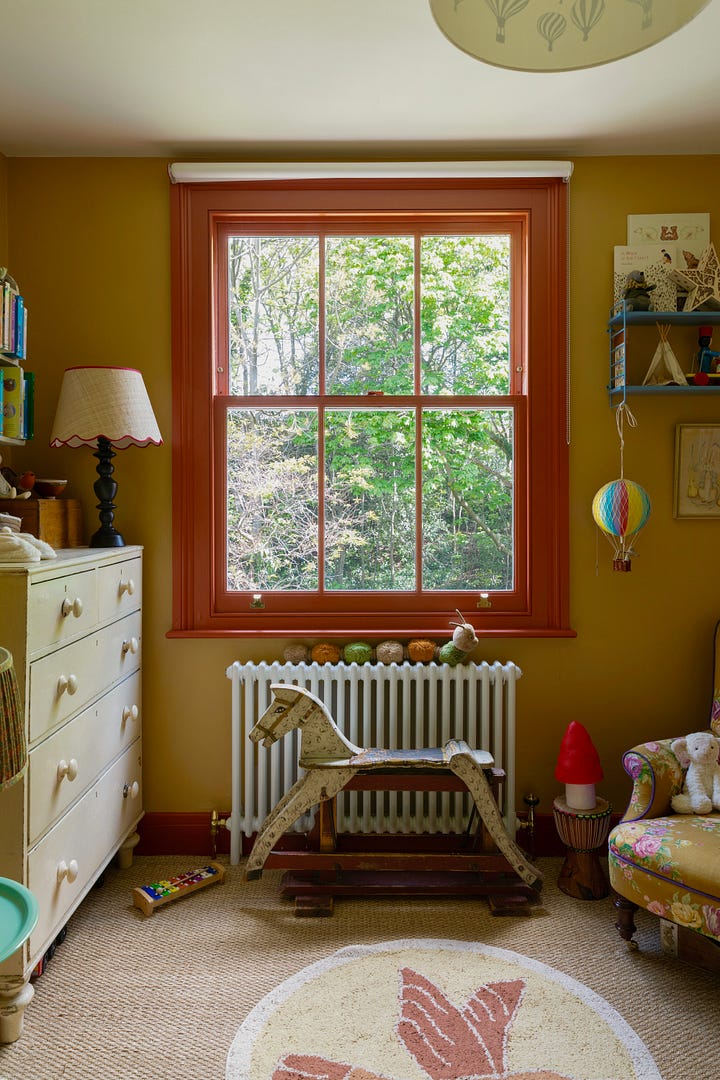
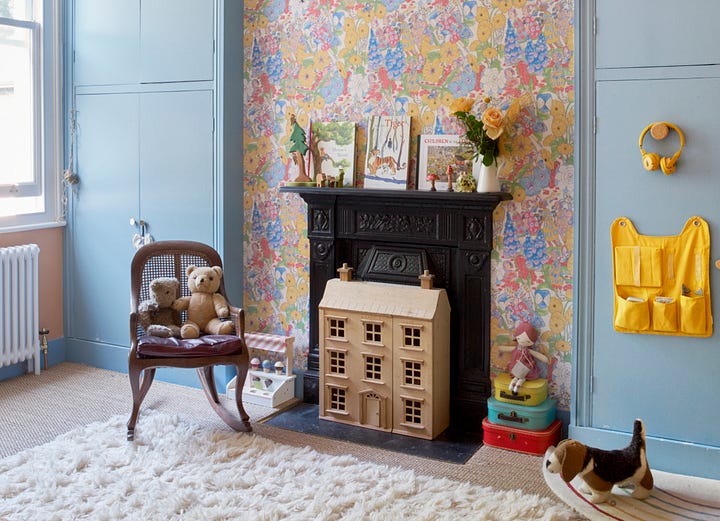
Colour blocking with contrasting tones is a great tool for introducing colour into a room, such as a kids’ bedroom, without it feeling overwhelming, according to Ruth. Choose a soothing tone for your walls and pair with a fun accent colour for your windows, doors and any architectural features. If you’re feeling brave, go the extra mile and opt for a dark shade on the ceiling, maybe even with some glow-in-the-dark stars, drawing focus to the height of the room and giving the kids something to gaze up at when bedtime comes around.
Keep reading with a 7-day free trial
Subscribe to Nest magazine to keep reading this post and get 7 days of free access to the full post archives.




